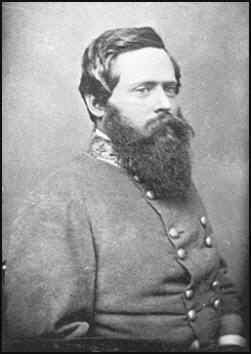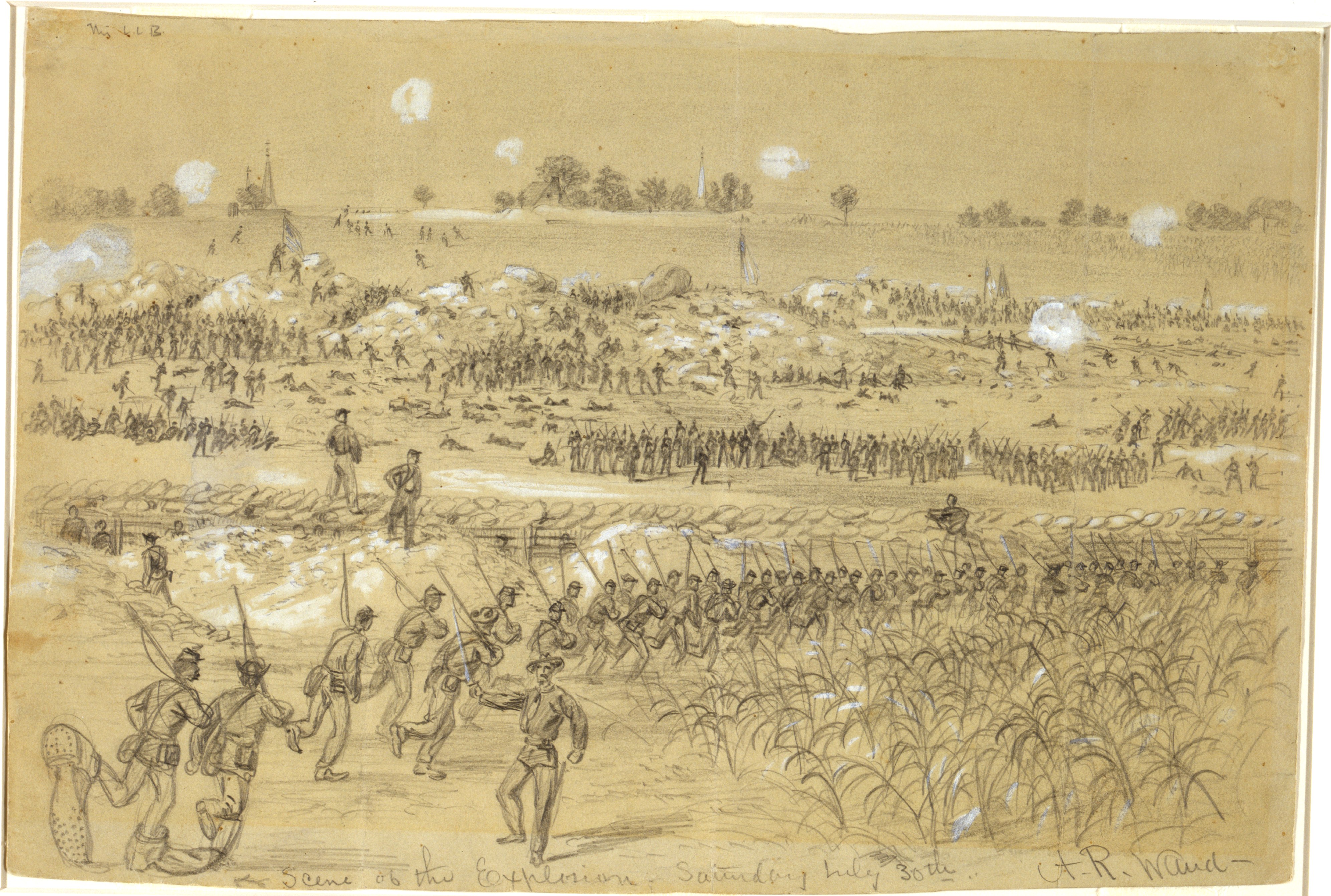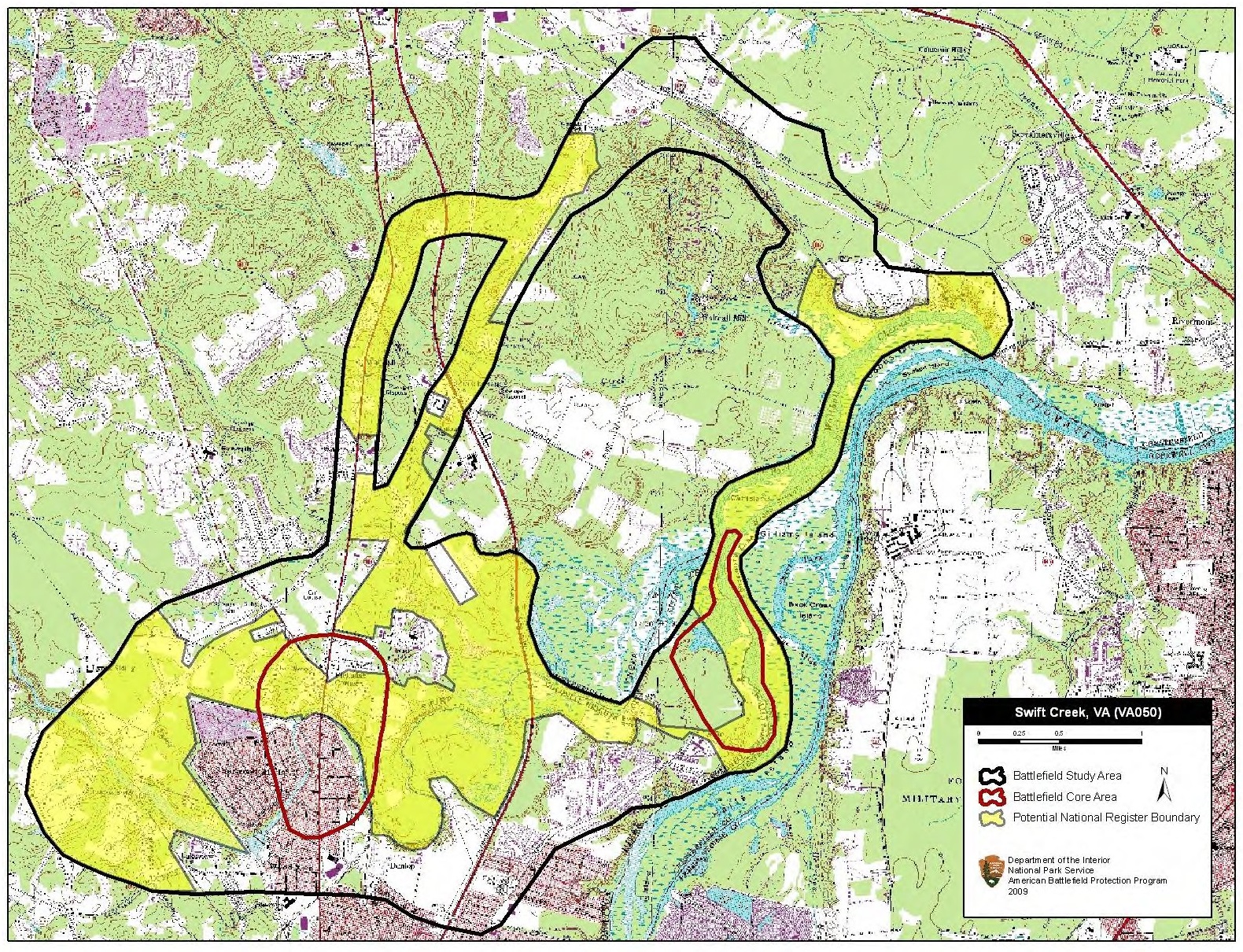|
Bushrod Johnson
Bushrod Rust Johnson (October 7, 1817 – September 12, 1880) was a Confederate general in the American Civil War and an officer in the United States Army. As a university professor he had been active in the state militias of Kentucky and Tennessee and on the outbreak of hostilities he sided with the South, despite having been born in the North in a family of abolitionist quakers. As a divisional commander he managed to evade capture at the Battle of Fort Donelson, but was wounded at the Battle of Shiloh. He served under Robert E. Lee throughout the 10-month Siege of Petersburg, and surrendered with him at Appomattox. Early life Johnson was born in Belmont County, Ohio. He was raised as a Quaker and, before moving to the South, worked on the Underground Railroad with his uncle. He graduated from the United States Military Academy in 1840 and was commissioned a second lieutenant in the 3rd U.S. Infantry. He fought in the Seminole War in Florida and the Mexican–American War. ... [...More Info...] [...Related Items...] OR: [Wikipedia] [Google] [Baidu] |
Belmont County, Ohio
Belmont County is a county in the U.S. state of Ohio. As of the 2020 United States Census, the population was 66,497. Its county seat is St. Clairsville. The county was created on September 7, 1801, and organized on November 7, 1801.McKelvey, A. T.. Centennial history of Belmont County, Ohio, and representative citizens. pp. 46-47. Chicago, Biographical Pub. Co. (1903) It takes its name from the French for "beautiful mountain". Belmont County is part of the Wheeling, West Virginia metropolitan area. History Dille, Ohio, also known as Dilles Bottom, was located across the Ohio River from Moundsville, West Virginia. It was founded by the sons of David Dille (b. 1718) around 1790 and was initially a fort called Fort Dille. Belmont County was authorized in September 1801 by the Northwest Territorial legislature, with area partitioned from Jefferson and Washington counties. The county would be organized two months later. Its area was reduced in 1810 when area was ceded for the ... [...More Info...] [...Related Items...] OR: [Wikipedia] [Google] [Baidu] |
Battle Of Fort Donelson
The Battle of Fort Donelson was fought from February 11–16, 1862, in the Western Theater of the American Civil War. The Union capture of the Confederate fort near the Tennessee–Kentucky border opened the Cumberland River, an important avenue for the invasion of the South. The Union's success also elevated Brig. Gen. Ulysses S. Grant from an obscure and largely unproven leader to the rank of major general, and earned him the nickname of "Unconditional Surrender" Grant. Following his capture of Fort Henry on February 6, Grant moved his army (later to become the Union's Army of the Tennessee) overland to Fort Donelson, from February 11 to 13, and conducted several small probing attacks. On February 14, Union gunboats under Flag Officer Andrew H. Foote attempted to reduce the fort with gunfire, but were forced to withdraw after sustaining heavy damage from the fort's water batteries. On February 15, with the fort surrounded, the Confederates, commanded by Brig. Gen. John ... [...More Info...] [...Related Items...] OR: [Wikipedia] [Google] [Baidu] |
Battle Of Five Forks
The Battle of Five Forks was fought on April 1, 1865, southwest of Petersburg, Virginia, around the road junction of Five Forks, Dinwiddie County, at the end of the Siege of Petersburg, near the conclusion of the American Civil War. The Union Army commanded by Major General Philip Sheridan defeated a Confederate force from the Army of Northern Virginia commanded by Major General George Pickett. The Union force inflicted over 1,000 casualties on the Confederates and took up to 4,000 prisonersSome historians, such as Noah Andre Trudeau cited later, favor the lower Confederate casualty count of about 605 and lower prisoner count of about 2,400. while seizing Five Forks, the key to control of the South Side Railroad, a vital supply line and evacuation route. After the Battle of Dinwiddie Court House (March 31) at about 10:00 pm, V Corps infantry began to arrive near the battlefield to reinforce Sheridan's cavalry. Pickett's orders from his commander General Robert E. Lee were ... [...More Info...] [...Related Items...] OR: [Wikipedia] [Google] [Baidu] |
Battle Of White Oak Road
The Battle of White Oak Road, also known as The Battle of Hatcher's Run, Gravelly Run, Boydton Plank Road, White Oak Ridge was fought on March 31, 1865, during the American Civil War at the end of the Richmond-Petersburg Campaign and in the beginning stage of the Appomattox Campaign. Along with the Battle of Dinwiddie Court House which was fought simultaneously on March 31, the battle involved the last offensive action by General Robert E. Lee's Confederate Army of Northern Virginia to stop the progress of Lieutenant General Ulysses S. Grant's Union Army (Army of the Potomac, Army of the Shenandoah and Army of the James). Grant's forces were moving to cut the remaining Confederate supply lines and to force the Confederates to extend their defensive lines at Petersburg, Virginia and Richmond, Virginia to the breaking point, if not to force them into a decisive open field battle. On March 29, 1865, the Union V Corps under Major General Gouverneur K. Warren moved to the end of ... [...More Info...] [...Related Items...] OR: [Wikipedia] [Google] [Baidu] |
Siege Of Petersburg
The Richmond–Petersburg campaign was a series of battles around Petersburg, Virginia, fought from June 9, 1864, to March 25, 1865, during the American Civil War. Although it is more popularly known as the Siege of Petersburg, it was not a classic military siege, in which a city is usually surrounded and all supply lines are cut off, nor was it strictly limited to actions against Petersburg. The campaign consisted of nine months of trench warfare in which Union forces commanded by Lt. Gen. Ulysses S. Grant assaulted Petersburg unsuccessfully and then constructed trench lines that eventually extended over from the eastern outskirts of Richmond, Virginia, to around the eastern and southern outskirts of Petersburg. Petersburg was crucial to the supply of Confederate Gen. Robert E. Lee's army and the Confederate capital of Richmond. Numerous raids were conducted and battles fought in attempts to cut off the Richmond and Petersburg Railroad. Many of these battles caused the leng ... [...More Info...] [...Related Items...] OR: [Wikipedia] [Google] [Baidu] |
Battle Of The Crater
The Battle of the Crater was a battle of the American Civil War, part of the siege of Petersburg. It took place on Saturday, July 30, 1864, between the Confederate Army of Northern Virginia, commanded by General Robert E. Lee, and the Union Army of the Potomac, commanded by Major General George G. Meade (under the direct supervision of the general-in-chief, Lieutenant General Ulysses S. Grant). After weeks of preparation, on July 30 Union forces exploded a mine in Major General Ambrose E. Burnside's IX Corps sector, blowing a gap in the Confederate defenses of Petersburg, Virginia. At that point, everything deteriorated rapidly for the Union attackers. Unit after unit charged into and around the crater, where most of them milled in confusion in the bottom of the crater. Grant considered this failed assault as "the saddest affair I have witnessed in this war." The Confederates quickly recovered, and launched several counterattacks led by Brigadier General William Mahone. The bre ... [...More Info...] [...Related Items...] OR: [Wikipedia] [Google] [Baidu] |
Petersburg Campaign
The Richmond–Petersburg campaign was a series of battles around Petersburg, Virginia, fought from June 9, 1864, to March 25, 1865, during the American Civil War. Although it is more popularly known as the Siege of Petersburg, it was not a classic military siege, in which a city is usually surrounded and all supply lines are cut off, nor was it strictly limited to actions against Petersburg. The campaign consisted of nine months of trench warfare in which Union forces commanded by Lt. Gen. Ulysses S. Grant assaulted Petersburg unsuccessfully and then constructed trench lines that eventually extended over from the eastern outskirts of Richmond, Virginia, to around the eastern and southern outskirts of Petersburg. Petersburg was crucial to the supply of Confederate Gen. Robert E. Lee's army and the Confederate capital of Richmond. Numerous raids were conducted and battles fought in attempts to cut off the Richmond and Petersburg Railroad. Many of these battles caused the lengt ... [...More Info...] [...Related Items...] OR: [Wikipedia] [Google] [Baidu] |
Battle Of Swift Creek
The Battle of Swift Creek or Arrowfield Church was fought on May 9, 1864, between Union and Confederate forces during the American Civil War. Union forces were only partially successful: they inflicted damage on the local railroad, but further advance was halted. Description On May 9, Maj. Gen. Benjamin Butler made a thrust toward Petersburg and was met by Bushrod Johnson's Division at Swift Creek. A premature Confederate attack at Arrowfield Church was driven back with heavy losses, but Union forces did not follow up. After skirmishing, Butler seemed content to tear up the railroad tracks and did not press the defenders. In conjunction with the advance to Swift Creek, five Federal gunboat A gunboat is a naval watercraft designed for the express purpose of carrying one or more guns to bombard coastal targets, as opposed to those military craft designed for naval warfare, or for ferrying troops or supplies. History Pre-ste ...s steamed up the Appomattox River to ... [...More Info...] [...Related Items...] OR: [Wikipedia] [Google] [Baidu] |
Siege Of Knoxville
The siege of Knoxville (November 19 – December 4, 1863) saw Lieutenant General James Longstreet's Confederate States Army, Confederate forces besiege the Union (American Civil War), Union garrison of Knoxville, Tennessee, led by Major General Ambrose Burnside. When Major General William T. Sherman approached Knoxville with an overwhelming Union force, Longstreet ended the siege on December 4 and withdrew northeast. The siege was part of the Knoxville campaign of the American Civil War. In August and September 1863, Burnside's Army of Ohio carried out a nearly bloodless invasion of East Tennessee, an area that included a substantial pro-Union population. Burnside's occupying force was thrown on the defensive when Longstreet's corps and Major General Joseph Wheeler's cavalry launched a counter-invasion from the southwest in November. Longstreet missed his chance to smash the Union forces in the field when Burnside conducted a successful fighting withdrawal to Knoxville. When Long ... [...More Info...] [...Related Items...] OR: [Wikipedia] [Google] [Baidu] |
Battle Of Chickamauga
The Battle of Chickamauga, fought on September 19–20, 1863, between United States, U.S. and Confederate States of America, Confederate forces in the American Civil War, marked the end of a Union Army, Union offensive, the Chickamauga Campaign, in southeastern Tennessee and northwestern Georgia (U.S. state), Georgia. It was the first major battle of the war fought in Georgia, the most significant Union defeat in the Western Theater of the American Civil War, Western Theater, and involved the second-highest number of casualties after the Battle of Gettysburg. The battle was fought between the Army of the Cumberland under major general (United States), Maj. Gen. William Rosecrans and the Confederate States Army, Confederate Army of Tennessee under General (CSA), Gen. Braxton Bragg, and was named for Chickamauga Creek. The West Chickamauga Creek meanders near and forms the southeast boundary of the battle area and the park in northwest Georgia. (The South Chickamauga ultimately fl ... [...More Info...] [...Related Items...] OR: [Wikipedia] [Google] [Baidu] |









